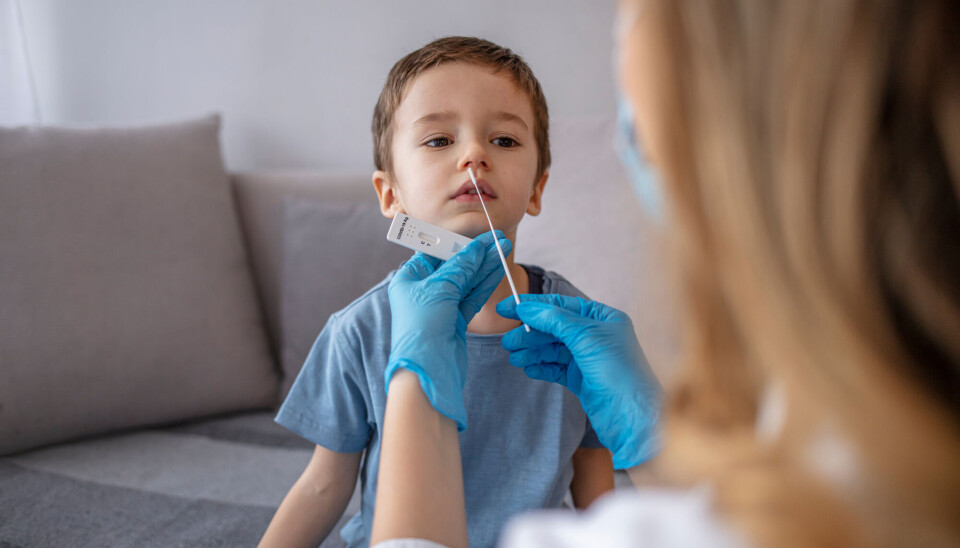
Mild long-term effects of Covid last longer among the youngest children
A new Norwegian study finds that children aged 1-5 visited their doctor more often due to long term effects of covid compared to to older children.
Children aged 1-5 had a more long-term increase in visits to their GP and the ER compared to children in the ages 6-15 and 16-19, according to the study from the Norwegian Institute of Public Health (NIPH).
The study was recently published in the British Medical Journal.
“Most typically, the children would go with their parents to the doctor due to trouble with their respiratory tract,” Karin Magnusson from the NIPH says in a press release. Magnusson led the study which included data on nearly 700 000 Norwegian children.
Just over 10 000 of them tested positive for Covid-19 between August 1st 2020 and February 1st 2021. 275 000 tested negative, and the rest were not tested.
The results also show that most children were taken care of within primary health care, they did not need treatment in a hospital.
“In total, our findings suggest mild long-term effects from Covid-19 in children and youth,” Magnusson says.
“Most children have mild disease, and for this large majority we see no increase in the use of specialist care. This implies limited severity of any possible long-term effects among children,” she says in the press release.
- RELATED: Norwegian study: More than half of young people with mild Covid-19 infections experienced Long Covid
Increase in visits to the GP
The aim of the study in question was to find out about long-term effects from Covid-19 in children that did not require hospitalization. Groups who had tested positive were compared to those who tested negative and those who were not tested at all. The researchers looked at how many of the children had needed help from primary or specialized health care.
The NIPH summarize their main results as follows:
- There was a short-term increase in visits to a general practitioner (at a doctor’s office or at the ER) in all age groups.
- The increase in going to the doctor was between 339 and 471 per cent the first month, after this the increase varied in accordance with age.
- For children aged 6-15 years and 16-19 years, visits to the doctor were back to normal after 2-3 months.
- The group that increased their visits to their GP’s the longest were the youngest children, aged 1-5 years old. After 3-6 months, the youngest children who tested positive for Covid-19 were still going to their GP 13 per cent more often than those who tested negative.
Mainly respiratory issues
Under regular circumstances, 1000 children aged 1-5 years old will on average go to the GP 30 times a week.
3-6 months after testing positive for Covid-19, children aged 1-5 years old went to the GP 34 times a week.
A similar increase in use of primary care as found in the study might also have been the effect of a regular influenza, according to Magnusson. This is currently being investigated.
While adults who go to their GPs after Covid-19 infections often have a number of different ailments, the children are first and foremost troubled by their respiratory system. Some general and less specific issues were also reported.
“This could be cough and perhaps being extra tired. That the youngest children go to the GP more often than the older ones can have multiple explanations,” Magnussen says.
“It could be that the youngest cough more and are more affected for a slightly longer period. But it could also be that the parents of younger children have a lower threshold for going to the doctor after Covid-19 compared to parents of older children,” she says.
- RELATED: New study on Long Covid: Brain fog, poor memory and shortness of breath one year after infection
































